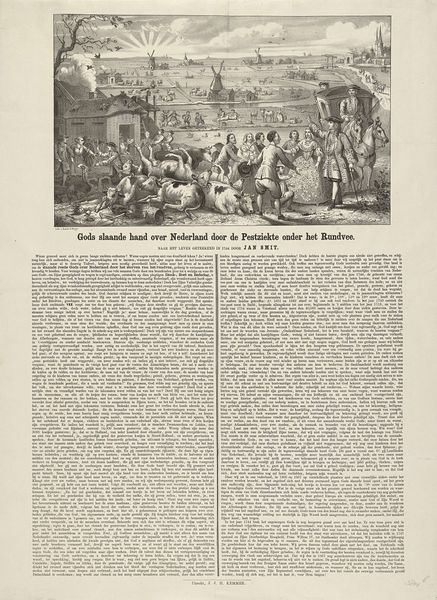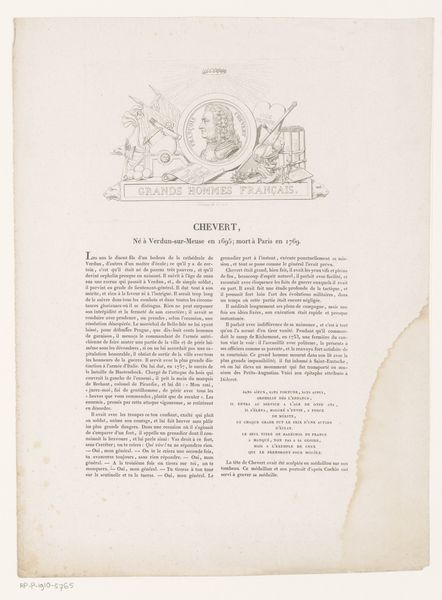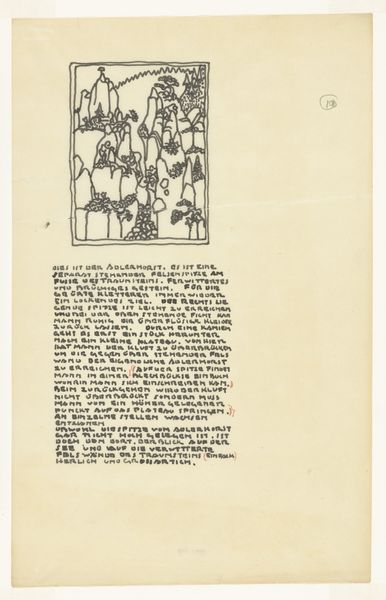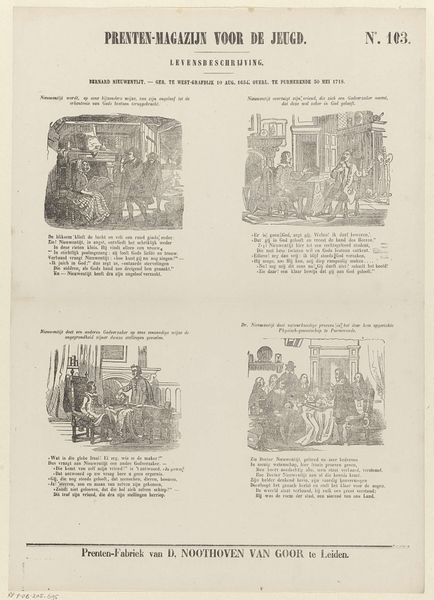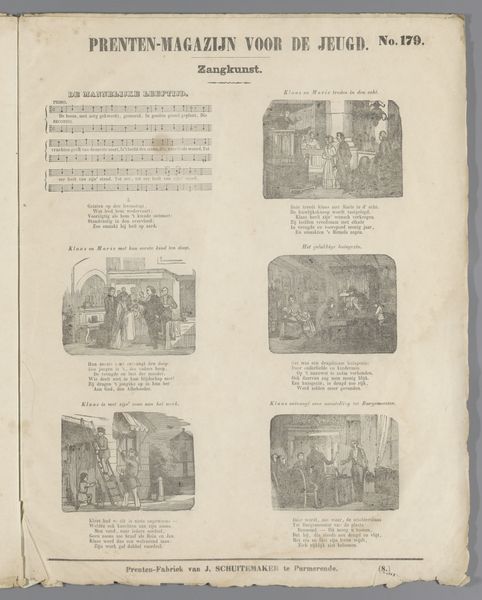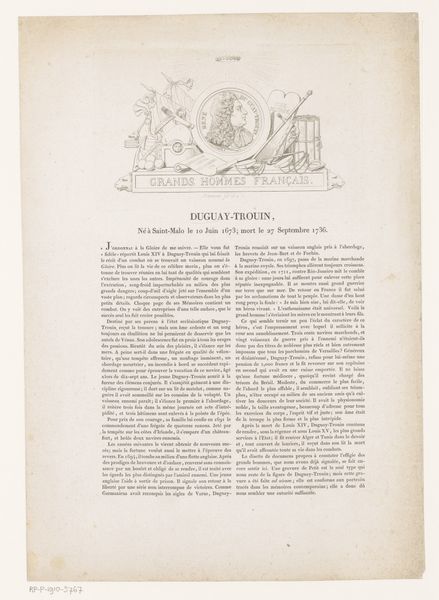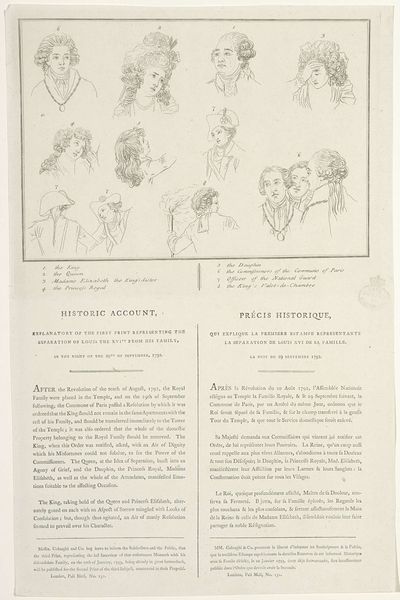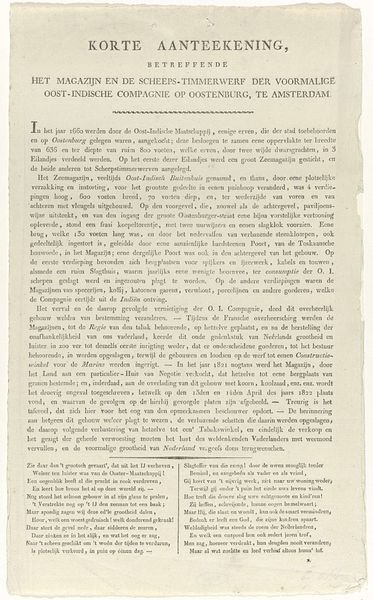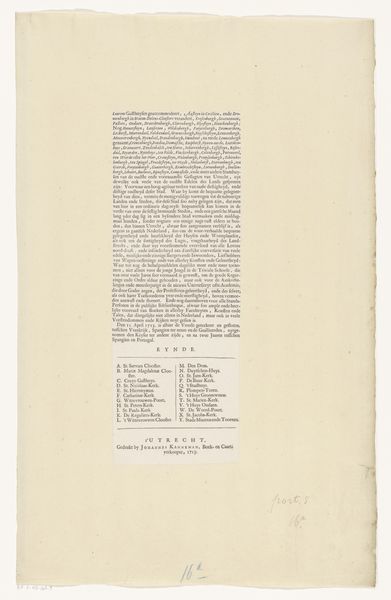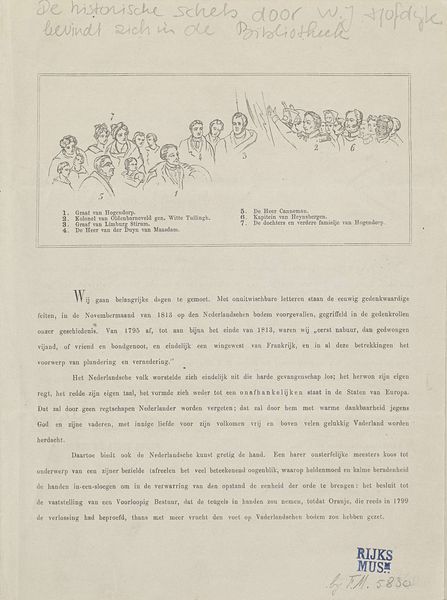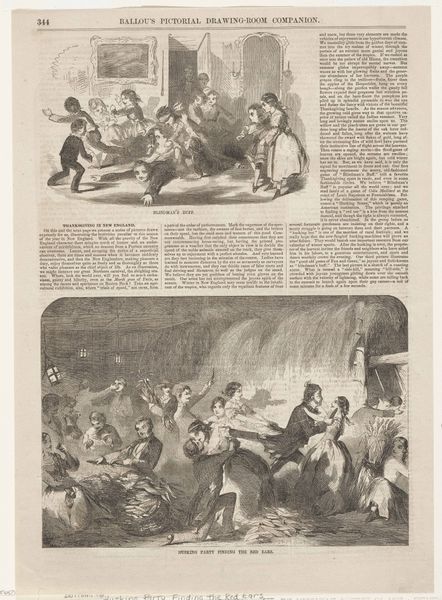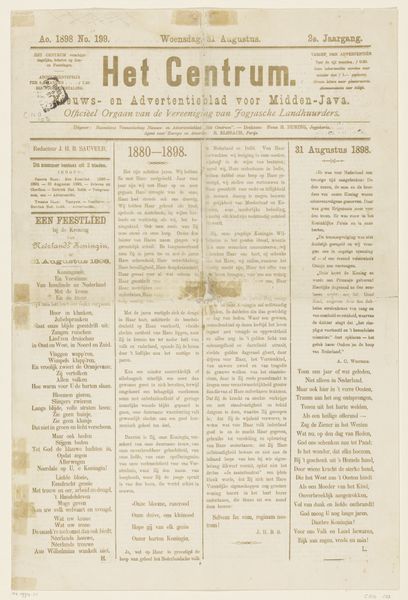
Toelichting bij de prent waarop Oliver Cromwell het parlement ontbindt 1785 - 1811
0:00
0:00
drawing, print, ink, engraving
#
portrait
#
drawing
#
narrative-art
# print
#
ink
#
geometric
#
history-painting
#
engraving
Dimensions: height 382 mm, width 246 mm
Copyright: Rijks Museum: Open Domain
Curator: Right, let's look closely at this etching entitled "Toelichting bij de prent waarop Oliver Cromwell het parlement ontbindt," dating from somewhere between 1785 and 1811. It's unsigned, from an unknown maker. It depicts scenes around the dissolution of Parliament by Oliver Cromwell. What's your immediate reaction to this piece? Editor: Well, it strikes me as chaotic, in a curiously formal way. The array of faces, floating above the dense text, gives it a sense of bewilderment. I'm trying to make sense of where to even begin with understanding it all! Curator: Good observation! That feeling probably arises from the printing process itself. Engraving demands intense planning, each line is meticulously carved. Consider the labour and expertise involved in creating multiple portraits with that degree of precision at this scale! The very materiality impacts its overall readability. Editor: True! I’m now fascinated by the rows of stern faces versus the very blocky presentation of information beneath. Is it common to use an artistic style such as "portraiture" in such didactic prints? I am also thinking about the function of geometric boxes filled with words surrounding so many character heads, so separated and classified... Curator: Precisely! Mixing text and image becomes critical to circulating these stories. Print enabled history and political commentary to become consumer products, influencing opinion through accessibility. Look at how individuals are visually labelled – power and reputation became a branding exercise that relied on reproducibility. Editor: A pre-internet meme, of sorts! What does that crowded composition tell us, about political factions or the public's engagement? Perhaps this image suggests anxieties around factions jostling for power. Each face vying for attention represents conflict… Curator: That's very insightful, really gets into the essence of print's cultural role. These images aimed not just to illustrate events but to promote a specific understanding shaped through accessible reproduction methods. What do you make of these materials – ink and paper? They seem almost delicate… Editor: Considering how much history the page contains makes holding it all that more fascinating. From my viewpoint, that so much could come of such little is part of the artwork’s enduring draw; it brings up the question how easily these depictions translate for viewers, who often find themselves far removed now both socially and artistically! Curator: Excellent point! Now, knowing about the social and economic networks within the production, this adds even more resonance and context that enrich what the maker intended.
Comments
No comments
Be the first to comment and join the conversation on the ultimate creative platform.
